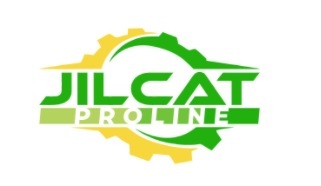Vibrations are among the most aggravating problems that a car may have. The vibration itself is disturbing, but it’s also quite difficult to figure out what’s wrong. There are several causes of a car’s cvt vibration on acceleration, and many of them require expensive repairs.
You could be asking why you wouldn’t just live in the USA with the cvt vibration on acceleration and get on with your life at this point, but believe us it is a horrible idea. Your vehicle wasn’t made to vibrate as it accelerates as you would expect, so you shouldn’t overlook a new vibration that just started. It may even present a safety risk when you’re driving down the road since it might harm other compartments of your automobile.
The good news is that a skilled technician can quickly pinpoint the problem, and you might even be able to complete some of the necessary repairs yourself. Let’s delve in and discuss some of the problems because our top-notch research team at JilCat Proline, USA has dealt with it long enough to have some insight into it.
Potential Sources of Vibrations When Increasing Speed :
Let’s now examine what may be creating the cvt vibration on acceleration.
CV Joint
Constant velocity or CV joints, which are a component of the axles in your automobile, are designed to survive for a very long period. However, if the plastic boots that serve as protection for them are torn, lubricant and dirt might seep out, leading to a variety of issues.
Motor Mount
You can have a broken or damaged motor mount. The components known as motor mounts are what fasten the engine to the frame of your car. That’s because it is significant, and if the motor mounts are damaged, the engine may slide and tremble when you push the gas pedal.
Out of Balance Tire
Although having an unbalanced tyre is bothersome, you should consider yourself fortunate if that is what is causing your vibration. A motor mount or CV joint may be replaced at a far lower cost than balancing or even changing a tyre.
Unstable Lug Nut
Your vehicle’s wheel might be loose. The lug nuts that hold your car’s wheels on occasionally have a chance of coming loose, which can make a wheel wobble on the hub while the car is moving. It’s advisable to stop if you see a problem and utilize the spare tyre kit in your car to tighten the lug nuts because this is certainly not something you want to happen.
Bent Driveshaft or Axle
In a vehicle with rear-wheel drive, where the driveshaft is used to transmit power from the engine and gearbox to the rear wheels, a bent driveshaft will be obvious. A curve can cause it to vibrate as it spins. Axles that are bent will also be noticeable, regardless of which wheels are being driven.
Brake Calipers
This is especially true for brake calipers that get stuck or freeze up. If that occurs, one or more of your wheels will continually be applying brakes, which might result in vibration when traveling quickly.
Can You Fix cvt vibration on acceleration Problems on Your Own?
Yes, you can, but bear in mind that some of these tasks are time- and labor-intensive. Additionally, you’ll need a place to work that is ideally off the road. Grab a maintenance handbook for your automobile if you’re considering taking on some of these tasks yourself so you are aware of the specifics of your make and model.
A Certified Mechanic is Sometimes Required
Even while we want to emphasize the “you” in “do-it-yourself,” we are aware that not everyone has the right equipment, a secure workplace, the free time, or the confidence to handle significant vehicle repairs. There are times when you just require high-quality repairs made by professionals to fix issues such as cvt vibration on acceleration in the USA.



